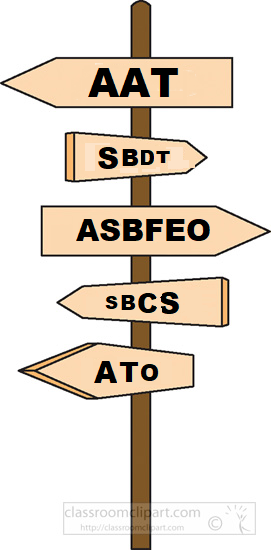
In Australia the income taxation of trusts is based on the trust being a conduit with look-through to beneficiaries of the trust who are presently entitled to the income of the trust. In the standard case of an adult resident beneficiary of a trust, the beneficiary is taxed on trust income and the trust is broadly treated as a transparent entity and isn’t taxed.
Even where a beneficiary is:
- not an adult; or
- not a tax resident;
the trustee of the trust pays tax though ostensibly on behalf of the beneficiary entitled to trust income at the rate applicable to the beneficiary and the beneficiary is entitled to a credit for tax paid on that income should the beneficiary file his, her or its own tax return.
Tax capture when no beneficiary entitled to the income
Look-through taxation of income doesn’t work when there is no beneficiary presently entitled to income of the trust to look through to. Under the Australian system, in these cases, the trustee of a trust pays tax at the highest marginal rate on income plus applicable levies including medicare levy. That is where no beneficiary is presently entitled to the income of a trust under section 99A of the Income Tax Assessment Act 1936.
The trustee beneficiary complication
Trusts can be beneficiaries of other trusts. These beneficiaries are “trustee beneficiaries” of a trust.
Example
- The trustee of trust B is a beneficiary and so is a trustee beneficiary of trust A.
- C, a beneficiary of trust B, takes (is presently entitled to) a share of the income of trust A.
- C may be an individual or a company, viz. an ultimate beneficiary, or may be a further trust – a further trustee beneficiary.
It is then necessary to trace trust income of trust A through trustee beneficiaries to find if there is an ultimate individual or company beneficiary entitled to that income. There may be no ultimate beneficiary entitled to income and the case of a “circular” trust distribution is a case in point.
The circular trust distribution by trusts
A definitive example of a circular trust distribution of income is where:
- trust X distributes income of trust X to trust Y; and
- trust Y distributes its income (back) to trust X.
There is thus no ultimate individual or company beneficiary. The income is in a state of flux. Nonetheless it is clear no beneficiary is presently entitled to the income and the highest marginal rate and applicable levies imposed under section 99A should be applicable to a circular trust distribution of income under the regime so far described.
That is a fair point in principle but a circular trust distribution, or any distribution to a trustee beneficiary that isn’t on-distributed to an ultimate beneficiary, is not necessarily readily traceable and identifiable as income to which no beneficiary is entitled. That is especially so where a labyrinthine structure of numerous trusts is used to conceal who is entitled to trust income and that there is no ultimate beneficiary who is not a trustee beneficiary entitled to trust income.
The legislative countermeasures
Countermeasures in the below legislation apply to support the integrity of flow through taxation of trusts. These countermeasures were introduced in Division 6D of Part III of the Income Tax Assessment Act 1936 which has lead to these new taxes:
- firstly, the ultimate beneficiary non-disclosure tax when introduced with the A New Tax System (Closely Held Trusts) Act 1999 (see below); and
- currently the trustee beneficiary non-disclosure tax as introduced to reform the ultimate beneficiary non-disclosure tax under the Taxation (Trustee Beneficiary Non-disclosure Tax) Act (No. 1) 2007 and the Taxation (Trustee Beneficiary Non-disclosure Tax) Act (No. 2) 2007.
These taxes were or are in substance proxies for tax on the trustee under section 99A for presumed lack of present entitlement of an ultimate beneficiary to ensure that income of a trust does not escape income tax either:
- for want of an ultimate beneficiary entitled to the income; or
- because of the opaque lack of an ultimate beneficiary where a trustee beneficiary may seem to be an ultimate beneficiary in the tax return of the trust.
Like the rate that applies under section 99A the rate of trustee beneficiary non-disclosure tax is the highest marginal rate plus applicable levies including the medicare levy.
The countermeasures also include a concept of “trustee” group which expands liability for trustee beneficiary non-disclosure tax to corporate directors of trustees of closely held trusts personally: an impost beyond the section 99A impost for falling under the purview of these anti-avoidance provisions.
A New Tax System (Closely Held Trusts) Act 1999
The first legislation to grapple with the tracing problem was in the A New Tax System (Closely Held Trusts) Act 1999 which introduced a wide and indiscriminate ultimate beneficiary statement reporting obligation on all closely held trusts.
Closely held trusts
A trust is a closely held trust if it:
- is a discretionary trust, or
- has up to 20 individuals who, between them, directly or indirectly, and for their own benefit, have fixed entitlements to a 75% or more share of the income or a 75% or more share of the capital of the trust;
where the trust is not an excluded trust. Examples of excluded trusts are complying superannuation funds and, for their first five years, deceased estates.
Reset of the closely held trust compliance burden
In response to sustained complaints from many trustees of trusts which did not distribute to trustee beneficiaries and their advisers, the federal government came to amend the regime in 2007 so that only trustees of closely held trusts which distribute income to:
- trustee beneficiaries;
- where the distribution includes an “untaxed part”;
have reporting obligations to file a trustee beneficiary (TB) statement. TB statements need to be filed with a tax return and, in the case of resident trustee beneficiaries, need to disclose the following about the trustee beneficiary:
- name,
- tax file number,
- the untaxed part of their share of trust income; and
- their share of tax preferred amounts;
and to withhold trustee beneficiary non-disclosure tax and to pay it to the Commissioner of Taxation where the relevant trustee beneficiary fails to provide the information for the TB statement when it is sought by the (distributor) closely held trust.
This more nuanced or targeted solution imposes a less onerous compliance burden on closely held trusts than the 1999 measures did.
Further, in accord with policy to treat “family trusts” viz. trusts that have
- a valid family trust election; or
- a valid interposed entity election;
in force or that otherwise forms part of a “family group” less onerously, family trusts were excluded trusts to which the closely held trusts regime did not apply following the 2007 reform.
2018-19 Budget changes to closely held trusts
Following an announcement in the 2018-19 Federal Budget, the closely held trust arrangements have been further tweaked by the Treasury Laws Amendment (2019 Tax Integrity and Other Measures No. 1) Act 2019. Under these changes it is still the case that family trusts still do not have to comply with the TB statement reporting requirements however family trusts are no longer excluded trusts.
That means that a family trust that is a closely held trust (which will often be the case) must now comply with the closely held trust obligations but a family trust remains relieved from the obligation to file TB statements and pay trustee beneficiary non-disclosure tax on omission to file a TB statement. Despite that a family trust is now liable for trustee beneficiary non-disclosure tax on circular trust distributions under section 102UM of the Income Tax Assessment Act 1936 but not on distributions received from other trusts (which are not circular and to which section 102UM does not apply).
How will compliance with the changes work?
It is perhaps unusual that the changed closely held trusts regime relieves a family trust, no longer an excluded trust and that distributes income to a trustee beneficiary, from filing a TB statement. The Commissioner of Taxation will have no TB statement to aid detection of a taxable circular distribution back to the family trust. Further, in the case of family trusts, the Commissioner won’t obtain TB statement level information about distributions by family trusts to trustee beneficiaries that are not circular or the opportunity to impose the trustee beneficiary non-disclosure tax on those distributions as a matter of course on the omission to file a TB statement.
Nevertheless the Commissioner of Taxation will have trustee beneficiary contact details and perhaps a tax file number, or will be alerted by the absence of a tax file number; from the tax return of a closely held trust family trust. The Commissioner can trace a distribution and ascertain when a circular trust distribution by a family trust occurs by investigative activity. Further, risk of family trust distributions tax liability under Schedule 2F of the Income Tax Assessment Act 1936 makes it less likely that a family trust will make a distribution liable to that tax, particularly a distribution of a tax preferred amount, to a trustee beneficiary that is:
- outside of the family group; and
- where that trustee beneficiary’s tax file number is not known by the trustee of the trust and reported in the trust tax return.








